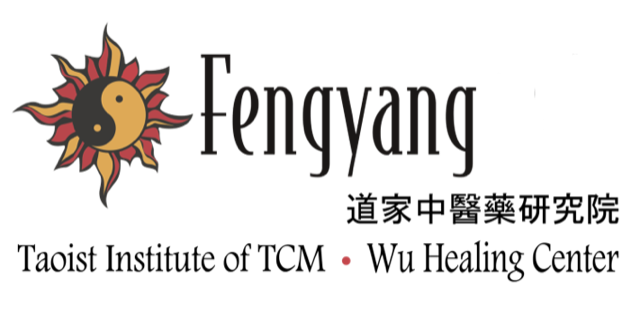Learn About Chinese Herbs -Sheng Ma (Rhizoma Cimicifugae)-
Sheng Ma (Rhizoma Cimicifugae)
This product is commonly used in traditional Chinese medicine. The Shennong Materia Medica, list it as top grade. It is so named because of its leaf-like ascent, hence “Sheng Ma” meaning leafy ascent.
Alias: Hole tooth root.
Source: Cimicifuga heracleifolia kom, a perennial herb of the ranunculaceae family, Cimicifuga dahurica (Turcz.). ) Maxim. and Sheng Ma Cimicifuga foetida L. to burn the rhizome of the whisker root. Wild.
Origin: mainly produced in Hebei, Shanxi, Northeast China, Inner Mongolia and other places; Sichuan, Shaanxi, Qinghai are also produced.
Character identification: irregular nodules long block, the surface is black brown, there are several round cavities (stem base marks) 1~2cm deep, some with uncleaned fine roots, hard, light body, hard quality, not easy to break. The cross-section is yellow-white or yellow-green, hollow, and surrounded by lamellars. Reticulated textures are visible around the cavity and where the outer skin is shed. The smell is bitter. It is best to be neat and hypertrophied, black skin, yellow-green inside, and does not need roots.
Main ingredients: Xing'an Sheng Ma contains a variety of steroid terpene components and Sheng Ma xylosin with the effect of lowering body temperature.
Pharmacological effects: antipyretic, detoxification, previous experience believes that it can "enhance qi", may be related to the role of stimulating smooth muscle. In addition, clinical observations suggest that this product also has a good analgesic effect.
Preparation: Slices for raw use. There is also charcoal stir-fry in Beijing.
Taste: Sweet, spicy and slightly cold.
Attribution: into the lungs, spleen, stomach meridians.
Function: Releasing the exterior, raising yang, eczema detoxification.
Main Uses: Wind fever headache, depression of qi, macules release.
Clinical Application:
(1) It is used to release the exterior. When measles first starts, it is used when the rash does not release, with Ge Gen, Niu Bang Zi, etc., such as in the formula “Sheng Ma Ge Gen Tang”. However, it should be noted that the heat is too high, or the measles has penetrated, or the person with shortness of breath then it is not suitable for use.
(2) It is used for raising yang and is used together with medicine for tonifying qi. For the treatment of rectal prolapse, uterine prolapse, insufficient qi, spleen deficiency and diarrhea, etc., the principle of action is not fully understood (predecessors said that it can enhance Zhong Qi), and after matching Chai Hu, the lifting power becomes more significant. Such as in formula “Bu Zhong Yi Qi Tang”.
(3) For pain relief. Especially suitable for people with head and face pain and wind heat, such as the treatment of mild cephalofacial neuralgia, paired with Cang Zhu, He Ye, such as in formula “Qing Zheng Tang”. Treatment of stomach fire toothache (gingivitis), can be paired with Ge Gen, Shi Gao or Huang Lian; and for throat rash or carbuncle it is paired with Xuan Shen, Jie Geng, Niu Bang Zi, etc.
Dosage: Commonly used amount 2.4g~9g. The dosage should not be too large, because the drug has a certain irritation, easy to cause vomiting, dizziness and other side effects.
Formula Examples:
(1) Sheng Ma Ge Gen Tang (from "Yan's Children's Formula"): Sheng Ma 2.4g, Ge Gen 9g, Chi Shao 4.5g, Gan Cao 2.4g, water decoction.
(2) Qing Zhen Tang (by Mr. Liu Hejian): Sheng Ma 9g, He Ye 1 piece, water decoction.
Annotations:
A kind of Guangdong Sheng Ma is produced in Guangdong, Fujian and Hunan, it is the root of the Asteraceae plant. It is spindle-shaped, light gray on the surface, hard and brittle, easy to break, powdery, only used in Fujian and Liang Guang and exported in small quantities.
In some areas of Gansu, Shaanxi and Yunnan, the rhizomes and whole grasses of the saxifrage family are used as red Sheng Ma. In addition, Sichuan produces the rhizome of a buttercup plant, Xiao Sheng Ma, and Guizhou produces the root of a goldenrod plant, called "Tu Sheng Ma" and "Gan Sheng Ma", both of which are different from the varieties described in the main text. The appearance of these medicinal herbs varies greatly and is only used locally.
Case study: myasthenia gravis
Patient: male, age 37
Chief complaints: Patient can barely open one of his eyes. He had trouble walking up a hill or carrying anything more than 10 pounds.
TCM diagnosis: spleen and stomach qi deficiency
TCM prescription: Wu Zhua Long 50g, Huang Qi 60g, Dang Shen 30g, Chao Bai Zhu 30g, Chen Pi 10g, Sheng Ma 10g, Chai Hu 10g, Zhi Gan Cao 5g, Dang Gui 10g
Other TCM treatment: moxibustion for 1 hr a day, mugwort foot bath, abdominal breathing, Fengyang Qi Gong
Patient feedback: Patient felt significantly better after 7 days. After two months, most of his motor functions are backed, and he can open both eyes.
Disclaimer: All above articles are for reference only. If patients are interested, please consult a professional practitioner Traditional Chinese Medicine for a consultation.



